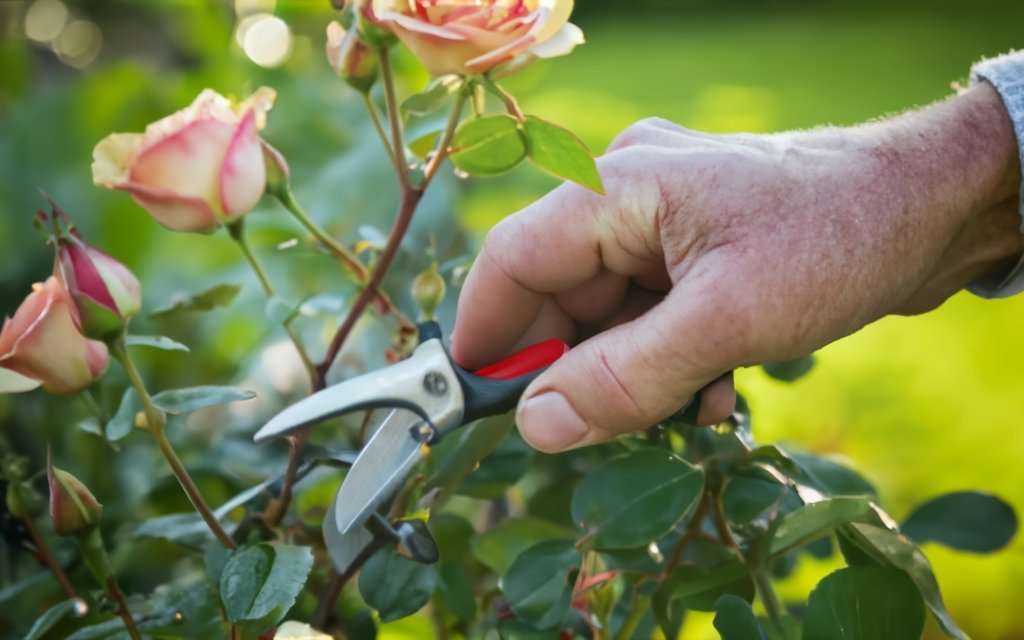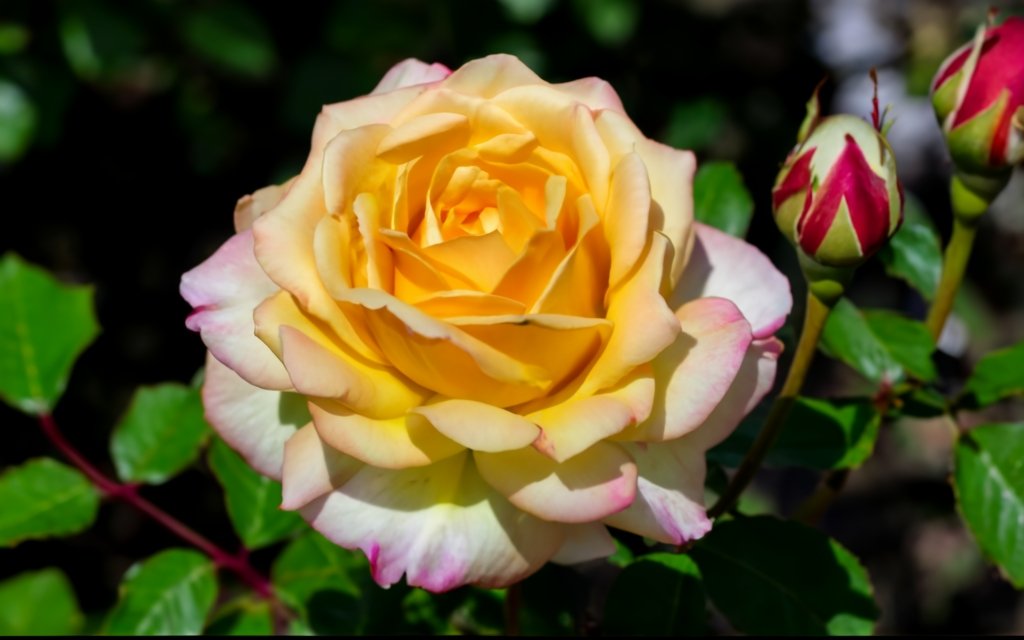Introduction to Winter Rose Care
Roses, a symbol of love and beauty, face a tough time during winter. Just like us, they need a little extra care to thrive through the frosty months. Did you know that winter’s chill isn’t just a discomfort but a real threat to your beloved roses? During winter, roses enter a dormant phase, a kind of hibernation, where they conserve energy and brace themselves against the cold. But without proper care, the harsh frost can damage or even kill these hardy yet delicate plants. So, let’s gear up and ensure our roses can not only survive but flourish when spring comes knocking! Remember, a little effort now means a garden full of vibrant blooms later.

Understanding Rose Types and Winter Needs
Navigating the winter needs of roses starts with knowing the type you’re tending to. Each variety, from the elegant Hybrid tea roses to the robust shrub types, has its unique winter playbook.
Hybrid tea roses, the prima donnas of the rose world, demand meticulous care. They thrive with a snug winter blanket of mulch and prefer a conservative trim to protect their delicate structure from frost’s bite.
Shrub roses, on the other hand, are the hardy warriors of cold weather. Their robust nature means less coddling, but don’t ignore them – a light prune and some mulch do wonders.
And then, there are climbing roses. These graceful climbers need a strategic approach. Think less about cutting back and more about securing their long canes against the battering winter winds.
Winter Care Needs by Rose Type
| Rose Type | Pruning | Mulching | Covering | Additional Care |
|---|---|---|---|---|
| Hybrid Tea Roses | Moderate | Yes | Yes | Vulnerable to frost, require careful protection |
| Shrub Roses | Light | Yes | Optional | Hardy, less susceptible to cold |
| Climbing Roses | Minimal | Yes | Yes | Secure canes, cover for wind protection |

In essence, understanding your rose type is key to winter success. Each variety whispers its needs; listen closely, and you’ll have a garden that wakes up from winter’s sleep, ready to bloom in spring’s embrace.
When to Start Pruning Roses
Timing is everything when it comes to pruning roses. You don’t want to jump the gun and start too early, or you’ll invite frost damage. Wait until early spring, just after the last frost, to start your pruning endeavors. This is when roses shake off their winter slumber and gear up for new growth. By timing your pruning right, you give your roses a solid headstart for a season full of vibrant blooms. It’s a bit like waking them up gently from their winter nap – do it right, and they’ll thank you with stunning flowers.
Essential Pruning Techniques
Pruning Equipment Checklist
Preparing for rose pruning requires the right tools for the job. To make sure you have everything you need, here’s a comprehensive checklist. This list ensures that you’re fully equipped to handle the delicate task of pruning your roses, promoting healthy growth and beautiful blooms in the spring.
- Pruning Shears: Sharp and clean
- Loppers: For thicker canes
- Gloves: To protect hands
- Pruning Saw: For very thick branches
- Disinfectant Wipes: To clean tools
- Pruning Sealer: To seal cuts
- Rake: For cleaning debris
- Mulch: Organic, for covering base
Cutting Techniques
Pruning roses is like a precise art form. Arm yourself with sharp shears and target the canes. The key? Make clean cuts at a 45-degree angle about 1/4 inch (0.6 cm) above an outward-facing bud. This angle is crucial – it directs new growth outwards, preventing a tangled, inward mess.
Dealing with Dead Wood
Dead wood is a no-go. It’s a haven for pests and diseases. Identify it by its brown, lifeless appearance. Snip it right back to the base, where healthy, green growth begins. This not only tidies up your bush but also encourages robust new growth.

Shaping the Rose Bush
Shaping is more than just aesthetics; it’s about the health of your bush. Aim for an open, vase-like shape, allowing sunlight and air to penetrate the center. This reduces the risk of diseases. Remove any thin, spindly canes weaker than a pencil – they won’t support healthy blooms. Remember, less is often more when it comes to pruning; overdoing it can stress your roses.
By following these techniques, you’ll ensure your rose bushes are not just surviving, but thriving, showcasing their beauty in full bloom.
Winterizing Roses: Protection from the Elements
Mulching
Mulching is your first line of defense against the cold. Apply a generous layer of organic mulch around the base of each rose bush. This acts like a cozy blanket, maintaining soil warmth and moisture. Be sure to keep the mulch a few inches away from the stems to prevent rot.
Watering
Believe it or not, roses still need water in winter. On warmer days, give them a light drink to prevent the soil from completely drying out. This keeps the roots healthy and ready for spring.
Covering
For extra protection, especially in harsh climates, covering your roses can be a game-changer. Use burlap or a specialized rose cover to shield them from icy winds and frost. This technique is particularly vital for delicate varieties that are more susceptible to cold damage.
By mulching, watering wisely, and covering as needed, you give your roses a fighting chance against winter’s harshness, setting the stage for a stunning spring revival.

Post-Pruning Care and Maintenance
Sealing and Cleaning
After pruning, it’s crucial to seal the cuts. This prevents diseases and pests from invading. Use a pruning sealer to cover each cut, a simple step that can significantly boost your rose’s health. Then, clean up the area. Remove all dead branches and leaves to prevent them from becoming a breeding ground for diseases.
Ongoing Care During Winter
Even after pruning, your roses require ongoing attention through winter. Check on them regularly, ensuring they’re not under stress from weather or pests. This proactive approach will keep your roses robust and ready for spring.

Common Mistakes to Avoid in Rose Winter Care
Over-pruning
Over-pruning can leave your roses vulnerable to cold stress and damage. The trick is to cut back just enough to promote health without stripping the plant bare. Aim to remove only the dead or weak canes and leave the rest for nature’s course.
Incorrect Timing
Timing is everything. Stop fertilizing before the first frost to allow your roses to enter dormancy naturally. Pruning too early can stimulate new growth that heavy winter snows will damage. Wait until early spring, post the last frost, to start pruning. This helps your roses stay in sync with the seasons and prepares them for a vibrant bloom.
Conclusion: Ensuring Healthy Blooms in Spring
As we wrap up, remember that the essence of winter rose care is preparing for a vibrant spring. Proper pruning, protection from the elements, and ongoing maintenance set the stage for robust bloom and new growth. By following these simple yet effective steps, you’re not just safeguarding your roses against winter’s harshness; you’re setting them up for a spectacular display of flowers when warmer days return. Here’s to a garden full of healthy, flourishing roses!
